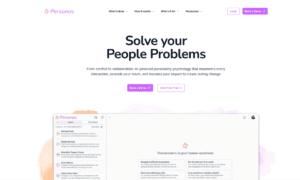The advent of social media platforms like Snapchat has transformed the way teenagers communicate and interact. While these platforms offer innovative ways to connect, they also present new challenges for parents striving to protect their children in the online world. Monitoring apps like the Bark and mSpy Snapchat tracker have emerged as a tool not just for overseeing teens’ Snapchat activities but also for fostering open communication between parents and their children about responsible online behavior.
The Snapchat Phenomenon Among Teens
Snapchat’s appeal among teenagers is undeniable. Its unique features, like disappearing messages and creative filters, make it a popular platform for young users. However, these same features can sometimes lead to risky behaviors, such as sharing inappropriate content or engaging with strangers. This is where the role of monitoring apps becomes crucial.
Monitoring Apps: Beyond Surveillance
The primary purpose of monitoring apps is often seen as keeping a watchful eye on teens’ online activities. However, their role extends beyond mere surveillance. These apps can be instrumental in initiating conversations about the wise use of social media, privacy, and the consequences of online actions.
Creating a Dialogue Around Social Media Use
One of the key benefits of using monitoring apps is the opportunity they create for dialogue. When parents explain the reason for using these apps, it opens up a space for discussing broader issues related to social media etiquette and safety. This dialogue can help teens understand the rationale behind their parents’ concerns and encourage them to think more critically about their online interactions.
Teaching Digital Literacy and Responsibility
Monitoring apps can be effective tools in teaching digital literacy. By reviewing their Snapchat activity together, parents can guide their teens on differentiating between appropriate and inappropriate content, understanding the importance of online reputation, and recognizing potentially harmful interactions. This shared activity can foster a sense of responsibility and awareness in teens about their digital footprint.
Respecting Privacy While Ensuring Safety
A significant challenge in using monitoring apps is balancing respect for privacy with the need for safety. Parents should use these apps as a way to guide and educate rather than to invade privacy. It’s important to set clear boundaries on what aspects of their Snapchat use will be monitored and to involve teens in this decision-making process. This approach helps maintain trust and respect in the parent-child relationship.
Building Trust Through Transparency
Transparency in using monitoring apps is key to building trust. Parents should be upfront about the use of these apps and involve their teens in the process. This includes discussing the types of monitoring that will be done, the reasons behind it, and how the information gathered will be used. Such transparency ensures that the use of monitoring apps is seen as a protective measure rather than a secretive invasion of privacy.
Responding to Concerns and Red Flags
When monitoring apps reveal concerns or red flags in a teen’s Snapchat use, it’s crucial to address these issues constructively. Parents should use these instances as teachable moments to discuss the potential risks and guide their teens on how to handle similar situations in the future. This approach reinforces the educational purpose of the monitoring apps.
Encouraging Self-Monitoring and Reflection
Ultimately, the goal of using monitoring apps should be to encourage teens to self-monitor and reflect on their online behavior. By gradually shifting the responsibility of monitoring from parent to teen, these apps can help young individuals develop the skills to navigate social media platforms like Snapchat responsibly and independently.
Addressing Challenges and Misunderstandings
Addressing the challenges and potential misunderstandings that can arise from using monitoring apps is an essential aspect of this journey. It’s not uncommon for teens to perceive the use of these apps as a lack of trust or an invasion of their personal space. Tackling these feelings directly and empathetically is crucial. Parents should emphasize that the use of monitoring apps is not about catching their teens in the act of wrongdoing, but about ensuring their safety in an online environment that can be unpredictable and sometimes dangerous.
This conversation should also extend to discussing the realities of the digital world, including the permanence of online actions and the potential for misinterpretation or misuse of shared content. By acknowledging their teen’s growing independence and need for private space, while also highlighting the importance of safety, parents can address these challenges more effectively. This approach helps in building a relationship based on mutual respect and understanding, where monitoring is seen as a part of guidance and care, rather than control. It’s about creating a partnership with your teen in the digital world, where both parties feel heard and respected.
The Bottom Line
Monitoring apps, when used effectively, can be much more than tools for overseeing teens’ activities on Snapchat. They serve as a gateway to open, honest conversations about the complexities of the online world. By fostering dialogue, teaching digital responsibility, respecting privacy, and building trust, these apps can help parents guide their teens in becoming wise, responsible digital citizens. In this way, monitoring apps become not just a means of protection but a platform for education and mutual understanding in the ever-evolving landscape of social media.



































